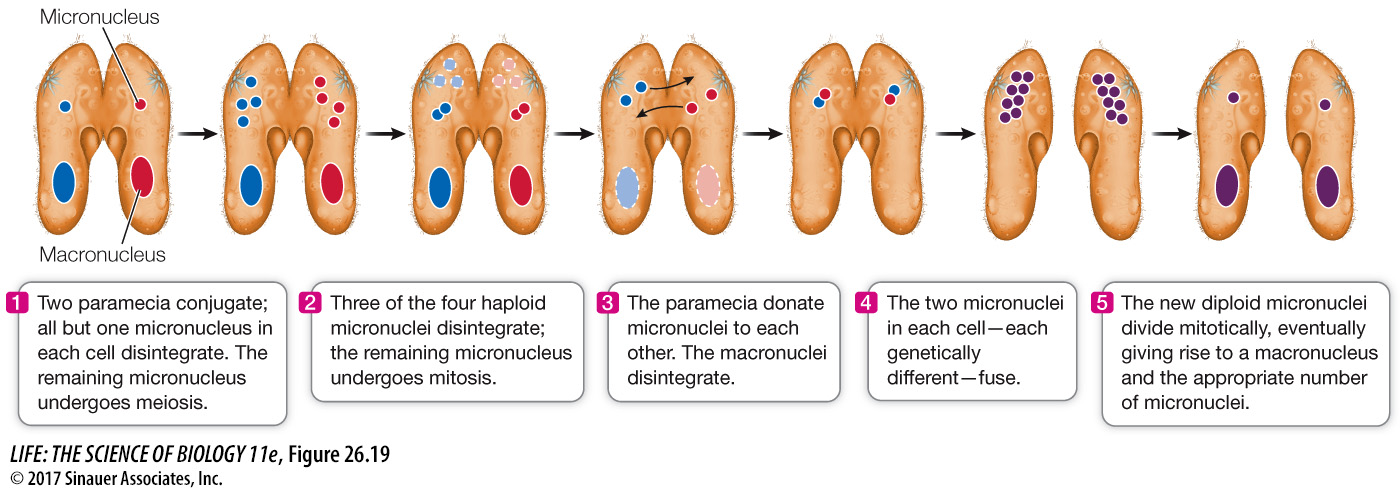Some protists reproduce without sex and have sex without reproduction
As noted in Key Concept 26.2, members of the genus Paramecium are ciliates, which commonly have two types of nuclei in a single cell (one macronucleus and from one to several micronuclei; see Figure 26.6). The micronuclei are typical eukaryotic nuclei and are essential for genetic recombination. Each macronucleus contains many copies of the genetic information, packaged in units containing only a few genes each. The macronuclear DNA is transcribed and translated to regulate the life of the cell.
When paramecia reproduce asexually, all of the nuclei are copied before the cell divides. Paramecia (and many other protists) also have an elaborate sexual behavior called conjugation, in which two individuals line up tightly against each other and fuse in the oral groove region of the body. Nuclear material is extensively reorganized and exchanged over the next several hours (Figure 26.19). Each cell ends up with two haploid micronuclei, one of its own and one from the other cell, which fuse to form a new diploid micronucleus. A new macronucleus develops from that micronucleus through a series of dramatic chromosomal rearrangements. The exchange of nuclei is fully reciprocal: each of the two paramecia gives and receives an equal amount of DNA. The two organisms then separate and go their own ways, each equipped with new combinations of alleles.

Question
Q: Why is conjugation considered sex without reproduction?
Conjugation is considered sex without reproduction because genetic material is exchanged (sex) but no new Paramecium are produced.
Conjugation in Paramecium is a sexual process of genetic recombination, but it is not a reproductive process. Two cells begin conjugation and two cells are there at the end, so no new cells are created. As a rule, each asexual clone of paramecia must conjugate periodically. Experiments have shown that if some species are not permitted to conjugate, the clones can live through only about 350 cell divisions before dying out.